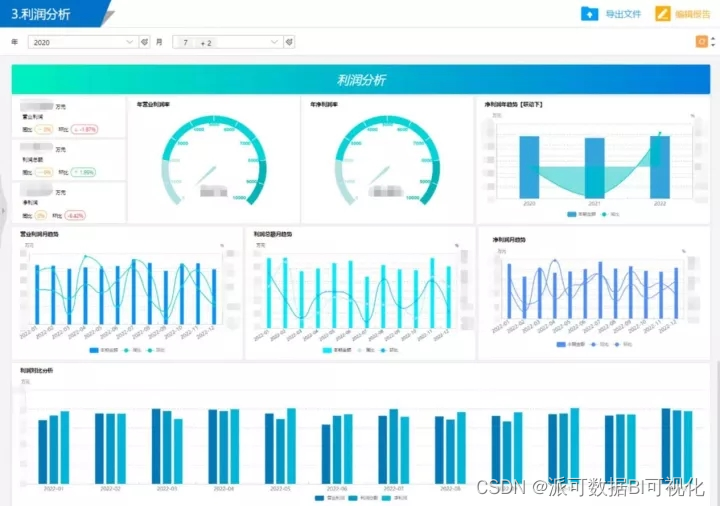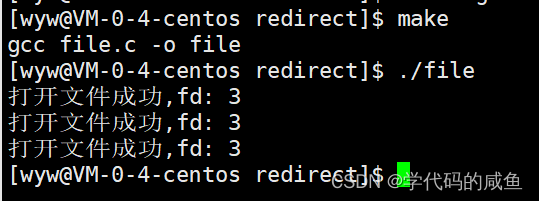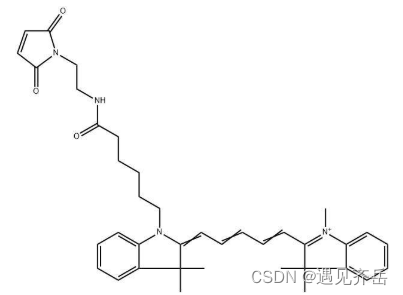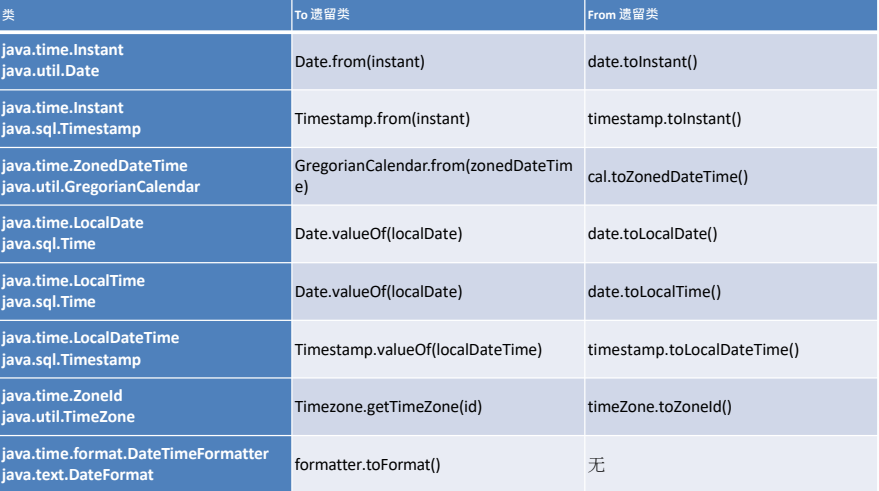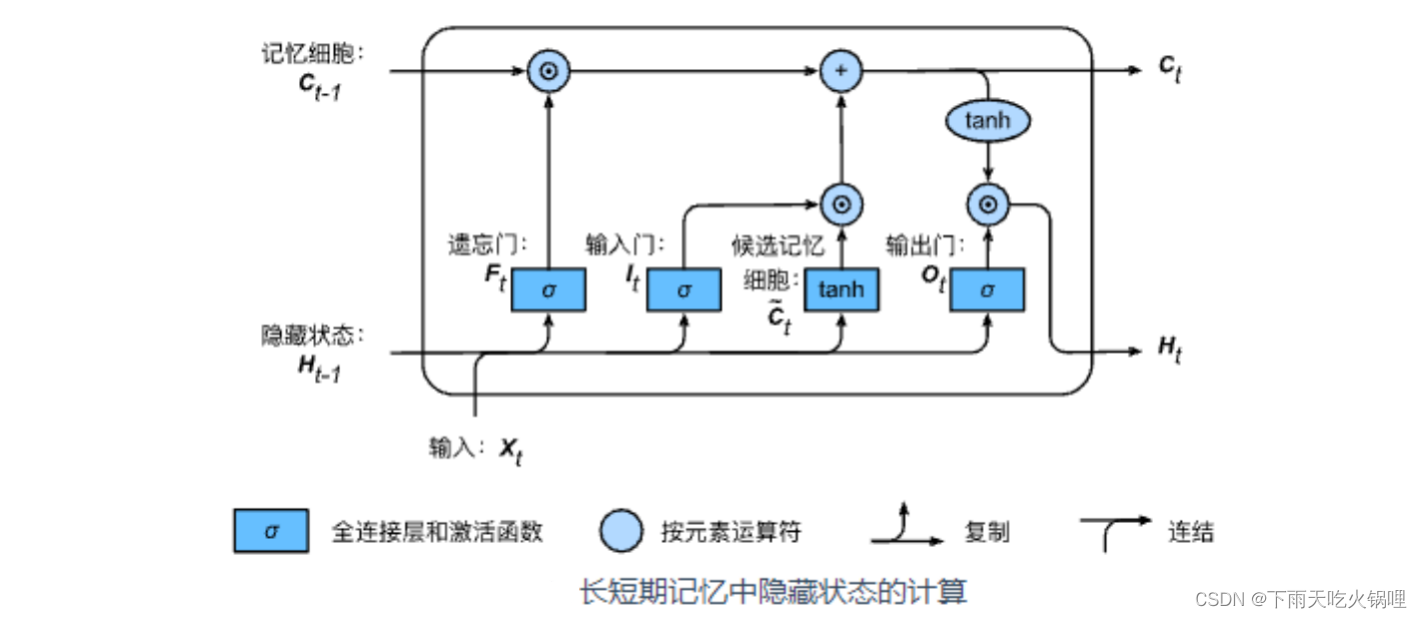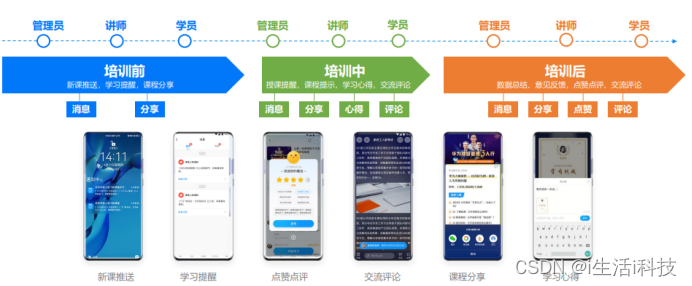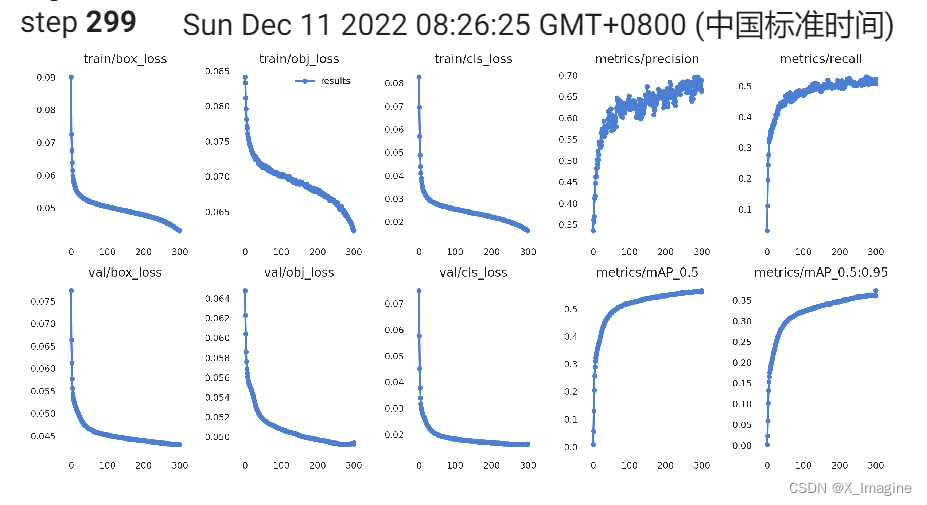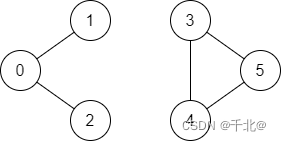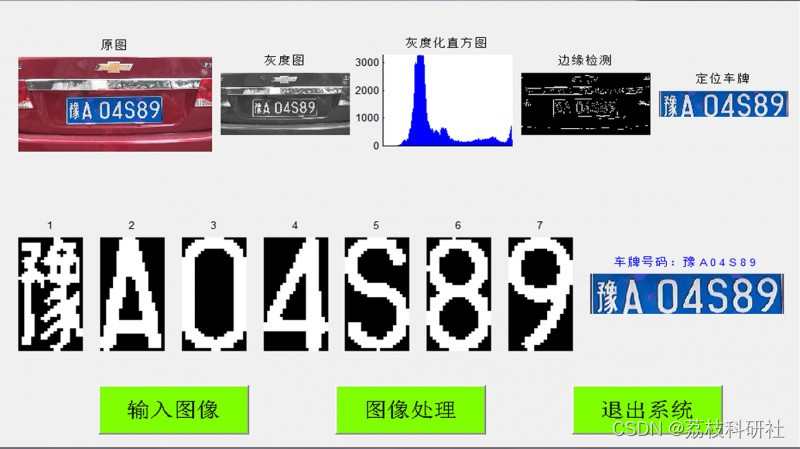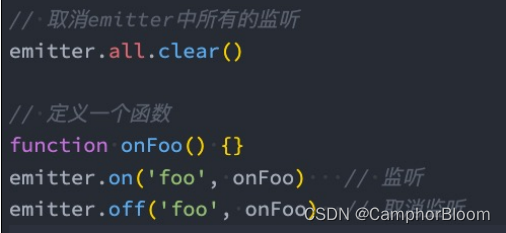@EnableCaching如何一键开启缓存
- 手动挡
- CacheManager
- Cache
- 使用演示
- 小结
- 自动挡
- CachingConfigurationSelector
- AutoProxyRegistrar
- ProxyCachingConfiguration
- CacheOperationSource
- CacheOperation
- BeanFactoryCacheOperationSourceAdvisor
- CacheInterceptor
- 小结
手动挡
我们首先来看看Spring对缓存模块的抽象体系:
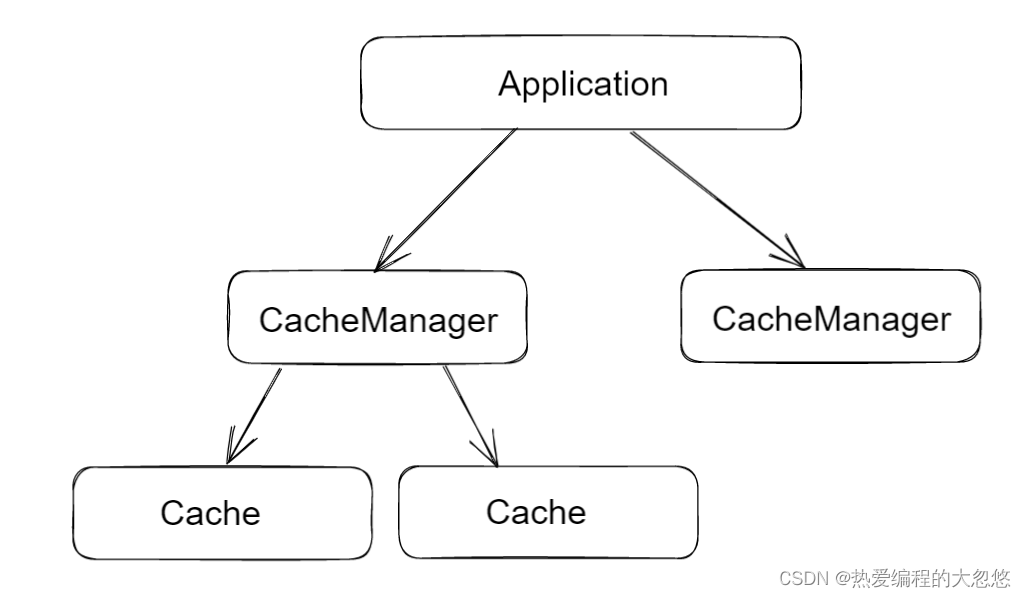
- CacheManager:缓存管理器。管理各种缓存(Cache)组件
- Cache:为缓存的组件规范定义,包含缓存的各种操作集合。比如它有很多实现:ConcurrentMapCache、RedisCache、EhCacheCache(额外导包)
Spring并没有提供缓存过期的处理,当然,后续我会给出具体的解决方案。
CacheManager
public interface CacheManager {
//一个cacheName对应一个Cache
Cache getCache(String name);
//返回所有cacheNames
Collection<String> getCacheNames();
}
CacheManager接口的子类如下:

- Caffeine,EnCache,JCacheManager底层采用了不同第三方实现,这里不多叙述。
- NoOpCacheManager用于禁用缓存。
- SimpleCacheManager通过ConcurrentHashMap集合来存放cacheName到Cache的映射关系。
- CompositeCacheManager内部保管了多个CacheManager,当要通过cacheName获取某个Cache时,会依次遍历CacheManager集合中每个CacheManager,只要其中一个返回的Cache不为null,那么就结束遍历,返回结果。
- 含有Transaction的CacheManager用于控制是否需要在当前事务提交成功时,再进行缓存的添加和清除工作,本质是通过
TransactionSynchronizationManager.registerSynchronization注册事务提交成功的监听器来完成的。
ConcurrentMapCacheManager是Spring Cache默认提供的缓基于内存的实现方案,我们来看看它具体是实现的:
public class ConcurrentMapCacheManager implements CacheManager, BeanClassLoaderAware {
//map存放映射关系
private final ConcurrentMap<String, Cache> cacheMap = new ConcurrentHashMap<>(16);
//该参数用于控制如果getCache时,对应的Cache不存在,是否自动创建Cache
private boolean dynamic = true;
//是否允许往缓存中添加null值,如果允许,那么null值会被进行特殊包装处理,方便在从缓存中获取数据时进行鉴别
private boolean allowNullValues = true;
//是存储副本还是引用
private boolean storeByValue = false;
...
//如果我们手动设置了cacheNames,那么会关闭自动创建Cache的功能
public void setCacheNames(@Nullable Collection<String> cacheNames) {
if (cacheNames != null) {
for (String name : cacheNames) {
//自动创建好对应的Cache
this.cacheMap.put(name, createConcurrentMapCache(name));
}
this.dynamic = false;
}
else {
this.dynamic = true;
}
}
public Cache getCache(String name) {
Cache cache = this.cacheMap.get(name);
//如果cacheName对应的cache不存在,并且开启了自动创建cache功能
//那么就自动创建cache
if (cache == null && this.dynamic) {
synchronized (this.cacheMap) {
cache = this.cacheMap.get(name);
if (cache == null) {
cache = createConcurrentMapCache(name);
this.cacheMap.put(name, cache);
}
}
}
return cache;
}
protected Cache createConcurrentMapCache(String name) {
//如果决定缓存中存储的是副本的话,那么需要 SerializationDelegate来完成深拷贝工作。
SerializationDelegate actualSerialization = (isStoreByValue() ? this.serialization : null);
return new ConcurrentMapCache(name, new ConcurrentHashMap<>(256), isAllowNullValues(), actualSerialization);
}
}
Cache
public interface Cache {
String getName();
// 返回未被包装的缓存值
Object getNativeCache();
// 就是用下面的ValueWrapper把值包装了一下而已~
@Nullable
ValueWrapper get(Object key);
@Nullable
<T> T get(Object key, @Nullable Class<T> type);
@Nullable
<T> T get(Object key, Callable<T> valueLoader);
void put(Object key, @Nullable Object value);
// 不存在旧值直接put就先去了返回null,否则返回旧值(并且不会把新值put进去)
@Nullable
ValueWrapper putIfAbsent(Object key, @Nullable Object value);
// 删除
void evict(Object key);
// 清空
void clear();
@FunctionalInterface
interface ValueWrapper {
@Nullable
Object get();
}
}
Cache的继承树也非常的简单:

我们先来看看AbstractValueAdaptingCache的实现:
// @since 4.2.2 出现得还是挺晚的~~~
public abstract class AbstractValueAdaptingCache implements Cache {
//是否需要缓存NULL值
private final boolean allowNullValues;
...
// lookup为抽象方法
@Override
@Nullable
public ValueWrapper get(Object key) {
Object value = lookup(key);
return toValueWrapper(value);
}
@Nullable
protected abstract Object lookup(Object key);
// lookup出来的value继续交给fromStoreValue()处理~ 其实就是对null值进行了处理
// 若是null值就返回null,而不是具体的值了~~~
@Override
@SuppressWarnings("unchecked")
@Nullable
public <T> T get(Object key, @Nullable Class<T> type) {
Object value = fromStoreValue(lookup(key));
if (value != null && type != null && !type.isInstance(value)) {
throw new IllegalStateException("Cached value is not of required type [" + type.getName() + "]: " + value);
}
return (T) value;
}
// 它是protected 方法 子类有复写
@Nullable
protected Object fromStoreValue(@Nullable Object storeValue) {
if (this.allowNullValues && storeValue == NullValue.INSTANCE) {
return null;
}
return storeValue;
}
// 提供给子类使用的方法,对null值进行转换~ 子类有复写
protected Object toStoreValue(@Nullable Object userValue) {
if (userValue == null) {
if (this.allowNullValues) {
return NullValue.INSTANCE;
}
throw new IllegalArgumentException("Cache '" + getName() + "' is configured to not allow null values but null was provided");
}
return userValue;
}
// 把value进行了一层包装为SimpleValueWrapper
@Nullable
protected Cache.ValueWrapper toValueWrapper(@Nullable Object storeValue) {
return (storeValue != null ? new SimpleValueWrapper(fromStoreValue(storeValue)) : null);
}
}
显然该类是后来(Spring4.2.2)插入进来的专门对null值进行的处理。它提供了通用实现,来适配null值的问题。若你自定义Cache的实现,建议继承自此抽象类。
ConcurrentMapCache实现:
public class ConcurrentMapCache extends AbstractValueAdaptingCache {
//当前cache对应的cacheName
private final String name;
//使用map集合作为缓存存储地方
private final ConcurrentMap<Object, Object> store;
//如果缓存中要求保存副本,则通过序列化器来完成深拷贝
private final SerializationDelegate serialization;
...
// 这是父类的抽象方法
@Override
protected Object lookup(Object key) {
return this.store.get(key);
}
@Override
public void put(Object key, @Nullable Object value) {
this.store.put(key, toStoreValue(value));
}
@Override
public void evict(Object key) {
this.store.remove(key);
}
@Override
public void clear() {
this.store.clear();
}
...
}
ConcurrentMapCache它是spring-context提供的内建唯一缓存实现,它是完全基于本地内存的。
Springboot默认使用的是SimpleCacheConfiguration,它配置的是ConcurrentMapCacheManager来实现缓存,因此对应Cache实现为ConcurrentMapCache
使用演示
@Test
public void test(){
CacheManager cacheManager = new ConcurrentMapCacheManager();
// 即使我们上面没有放进去名字为car的Cache,此处也会帮我们自动生成
Cache carCache = cacheManager.getCache("car");
// 向缓存里加数据
carCache.put("benz", "奔驰");
carCache.put("bmw", "宝马");
carCache.put("audi", "奥迪");
System.out.println(carCache.getClass()); //class org.springframework.cache.concurrent.ConcurrentMapCache
// 从缓存里获取数据
System.out.println(carCache.get("benz").get()); //奔驰
System.out.println(carCache.get("benz", String.class)); //奔驰
}
小结
到此为止,我们了解了如何使用原生缓存API来实现缓存功能,这一点和之前使用原生API完成Spring事务控制一样,但是问题在于使用编码来实现缓存,会导致缓存相关代码散落在项目代码中各个地方,不方便管理;
因此,和声明式事务一样,缓存模块同样可以借助于Spring提供的AOP体系来完成声明式缓存。
原生API方式实现缓存详细学习可以阅读此篇文章
自动挡
@EnableCaching注解可以一键开启缓存功能,然后我们使用**@Cacheable、@CachePut、@CacheEvict、@Caching等注解就可以完成声明式缓存了,这一点和@EnableTransactionManagement,@Transactional**组合一样。
下面,我们就来探究一下@EnableCaching到底是如何实现一键开启缓存的:
@Target(ElementType.TYPE)
@Retention(RetentionPolicy.RUNTIME)
@Documented
//CachingConfigurationSelector是重点
@Import(CachingConfigurationSelector.class)
public @interface EnableCaching {
//声明式缓存和声明式事务,还包括@Async注解实现,背后全部依靠Spring完善的AOP体系
//是否强制采用cglib代理
boolean proxyTargetClass() default false;
//代理模式,默认是普通代理--及采用jdk或者cglib代理完成
//另一种模式就是采用aspectj完成代理
AdviceMode mode() default AdviceMode.PROXY;
//目标对象可能同时被多个advisor切中,这里的order用于指定当前advisor的优先级
//用于对多个advisor进行排序
int order() default Ordered.LOWEST_PRECEDENCE;
}
CachingConfigurationSelector
public class CachingConfigurationSelector extends AdviceModeImportSelector<EnableCaching> {
private static final String PROXY_JCACHE_CONFIGURATION_CLASS =
"org.springframework.cache.jcache.config.ProxyJCacheConfiguration";
...
private static final boolean jsr107Present;
private static final boolean jcacheImplPresent;
static {
ClassLoader classLoader = CachingConfigurationSelector.class.getClassLoader();
jsr107Present = ClassUtils.isPresent("javax.cache.Cache", classLoader);
jcacheImplPresent = ClassUtils.isPresent(PROXY_JCACHE_CONFIGURATION_CLASS, classLoader);
}
//返回的className列表,表示需要向IOC容器中加入的bean集合
@Override
public String[] selectImports(AdviceMode adviceMode) {
switch (adviceMode) {
case PROXY:
//上面说过代理模式一般都是普通模式,下面的ASPECTJ可以忽略掉
return getProxyImports();
case ASPECTJ:
return getAspectJImports();
default:
return null;
}
}
// 向容器导入了AutoProxyRegistrar和ProxyCachingConfiguration
// 若JSR107的包存在(导入了javax.cache:cache-api这个包),并且并且存在ProxyJCacheConfiguration这个类
// 显然ProxyJCacheConfiguration这个类我们一般都不会导进来~~~~ 所以JSR107是不生效的。 但是但是Spring是支持的
private String[] getProxyImports() {
List<String> result = new ArrayList<>(3);
result.add(AutoProxyRegistrar.class.getName());
result.add(ProxyCachingConfiguration.class.getName());
if (jsr107Present && jcacheImplPresent) {
result.add(PROXY_JCACHE_CONFIGURATION_CLASS);
}
return StringUtils.toStringArray(result);
}
}
AdviceModeImportSelector会先获取到对应@Enablexxx注解中的adviceMode属性,然后将adviceMode作为参数传入selectImports,该方法由子类实现,子类再根据adviceMode决定导入哪些类到IOC容器中去。
AutoProxyRegistrar
为了在bean初始化的生命周期中通过相关回调接口(BeanPostProcessor)完成对bean的代理,我们需要往容器中添加一个自动代理创建器。
AutoProxyRegistrar负责完成往容器中注入自动代理创建器功能。
public class AutoProxyRegistrar implements ImportBeanDefinitionRegistrar {
...
@Override
public void registerBeanDefinitions(AnnotationMetadata importingClassMetadata, BeanDefinitionRegistry registry) {
boolean candidateFound = false;
//@EnableCaching注解需要标注在某个配置类上,importingClassMetadata就是该配置类的原数据信息
//这里是先获取到配置类上所有的注解全类名
Set<String> annTypes = importingClassMetadata.getAnnotationTypes();
for (String annType : annTypes) {
//配置类上通常存在很多注解,如何过滤出我们需要的@EnableCaching注解呢?
AnnotationAttributes candidate = AnnotationConfigUtils.attributesFor(importingClassMetadata, annType);
if (candidate == null) {
continue;
}
//如果注解中存在属性mode和proxyTargetClass,那么你就是我们要找的注解
Object mode = candidate.get("mode");
Object proxyTargetClass = candidate.get("proxyTargetClass");
if (mode != null && proxyTargetClass != null && AdviceMode.class == mode.getClass() &&
Boolean.class == proxyTargetClass.getClass()) {
candidateFound = true;
//自动代理创建器注入容器的前提是代理模式为proxy,即采用cglib或者jdk完成动态代理
if (mode == AdviceMode.PROXY) {
//往容器中放入一个自动代理创建器
AopConfigUtils.registerAutoProxyCreatorIfNecessary(registry);
//如果强制采用cglib代理的话,会将自动代理创建器的proxyTargetClass属性设置为true
//自动代理创建器都继承了proxyConfig
if ((Boolean) proxyTargetClass) {
AopConfigUtils.forceAutoProxyCreatorToUseClassProxying(registry);
return;
}
}
}
}
...
}
}
AutoProxyRegistrar最终注册到容器中的自动代理创建器类型为InfrastructureAdvisorAutoProxyCreator,InfrastructureAdvisorAutoProxyCreator自动代理创建器的特点在于它只会搜集出容器中所有基础advisor,然后再依次判断每个advisor是否能应用于当前bean。
这里基础的意思是bean对应的BeanDefinition中的Role为ROLE_INFRASTRUCTURE。
如果bean的role为ROLE_INFRASTRUCTURE,表示该bean是spring内部的基础设施bean。
Spring内部通常采用如下的方式来指定某个bean为基础设施bean。
@Bean(name = CacheManagementConfigUtils.CACHE_ADVISOR_BEAN_NAME)
@Role(BeanDefinition.ROLE_INFRASTRUCTURE)
ProxyCachingConfiguration
自动代理创建器已经就绪,下一步我们还需要将Caching相关的advisor放入容器中,这样InfrastructureAdvisorAutoProxyCreator就可以收集到该advisor,然后在对bean进行动态代理时,将该advisor放入代理对象的拦截器链中:
@Configuration(proxyBeanMethods = false)
@Role(BeanDefinition.ROLE_INFRASTRUCTURE)
public class ProxyCachingConfiguration extends AbstractCachingConfiguration {
@Bean(name = CacheManagementConfigUtils.CACHE_ADVISOR_BEAN_NAME)
@Role(BeanDefinition.ROLE_INFRASTRUCTURE)
public BeanFactoryCacheOperationSourceAdvisor cacheAdvisor(
CacheOperationSource cacheOperationSource, CacheInterceptor cacheInterceptor) {
BeanFactoryCacheOperationSourceAdvisor advisor = new BeanFactoryCacheOperationSourceAdvisor();
advisor.setCacheOperationSource(cacheOperationSource);
advisor.setAdvice(cacheInterceptor);
if (this.enableCaching != null) {
advisor.setOrder(this.enableCaching.<Integer>getNumber("order"));
}
return advisor;
}
@Bean
@Role(BeanDefinition.ROLE_INFRASTRUCTURE)
public CacheOperationSource cacheOperationSource() {
return new AnnotationCacheOperationSource();
}
@Bean
@Role(BeanDefinition.ROLE_INFRASTRUCTURE)
public CacheInterceptor cacheInterceptor(CacheOperationSource cacheOperationSource) {
CacheInterceptor interceptor = new CacheInterceptor();
interceptor.configure(this.errorHandler, this.keyGenerator, this.cacheResolver, this.cacheManager);
interceptor.setCacheOperationSource(cacheOperationSource);
return interceptor;
}
}

ProxyCachingConfiguration往容器中注入了以上三个Bean,这三个Bean就是声明式缓存实现的全部了。
ProxyCachingConfiguration的父类AbstractCachingConfiguration用于搜集用户注入容器中的CachingConfigurer,通过CachingConfigurer可以完成对Cache模块相关组件的自定义修改:
@Configuration(proxyBeanMethods = false)
public abstract class AbstractCachingConfiguration implements ImportAware {
...
@Nullable
protected Supplier<CacheManager> cacheManager;
@Nullable
protected Supplier<CacheResolver> cacheResolver;
@Nullable
protected Supplier<KeyGenerator> keyGenerator;
@Nullable
protected Supplier<CacheErrorHandler> errorHandler;
...
@Autowired(required = false)
void setConfigurers(Collection<CachingConfigurer> configurers) {
if (CollectionUtils.isEmpty(configurers)) {
return;
}
if (configurers.size() > 1) {
throw new IllegalStateException(configurers.size() + " implementations of " +
"CachingConfigurer were found when only 1 was expected. " +
"Refactor the configuration such that CachingConfigurer is " +
"implemented only once or not at all.");
}
//用户只能往容器中注入一个configure,多了会报错的
CachingConfigurer configurer = configurers.iterator().next();
//使用用户的自定义配置来修改缓存模块相关组件
useCachingConfigurer(configurer);
}
protected void useCachingConfigurer(CachingConfigurer config) {
this.cacheManager = config::cacheManager;
this.cacheResolver = config::cacheResolver;
this.keyGenerator = config::keyGenerator;
this.errorHandler = config::errorHandler;
}
}
CacheOperationSource
大家思考一个问题BeanFactoryCacheOperationSourceAdvisor增强器是如何判断当前bean是否需要缓存支持呢?
如果需要缓存支持,那么当拦截到目标对象方法执行时,又该如何解析获取到方法上缓存注解相关信息呢?
上面两个难题的解决最终靠的是CacheOperationSource:
public interface CacheOperationSource {
//判断当前bean是否需要缓存支持
default boolean isCandidateClass(Class<?> targetClass) {
return true;
}
//解析获取到方法上缓存注解相关信息
Collection<CacheOperation> getCacheOperations(Method method, @Nullable Class<?> targetClass);
}
CacheOperationSource的实现类如下:

我们这里只看通过解析注解来获取缓存信息的实现类:
AbstractFallbackCacheOperationSource中Fallback的意思是如果在方法上无法查询到相关缓存注解,那么还会尝试从以下几个地方去查询缓存注解:
- 目标对象所在类上
- 接口方法上
- 接口上
public abstract class AbstractFallbackCacheOperationSource implements CacheOperationSource {
//如果某个方法不需要缓存支持,为了避免每次都要解析很久来判断当前方法是否需要缓存支持,通过 NULL_CACHING_ATTRIBUTE 进行标记
private static final Collection<CacheOperation> NULL_CACHING_ATTRIBUTE = Collections.emptyList();
//缓存方法和该方法对应的缓存信息
private final Map<Object, Collection<CacheOperation>> attributeCache = new ConcurrentHashMap<>(1024);
@Override
public Collection<CacheOperation> getCacheOperations(Method method, @Nullable Class<?> targetClass) {
if (method.getDeclaringClass() == Object.class) {
return null;
}
//构建缓存key
Object cacheKey = getCacheKey(method, targetClass);
//缓存中已经存在了,那么直接返回当前方法对应的缓存信息
Collection<CacheOperation> cached = this.attributeCache.get(cacheKey);
//缓存中存在
if (cached != null) {
return (cached != NULL_CACHING_ATTRIBUTE ? cached : null);
}
else {
//缓存中不存在,那么就进行解析
Collection<CacheOperation> cacheOps = computeCacheOperations(method, targetClass);
if (cacheOps != null) {
....
this.attributeCache.put(cacheKey, cacheOps);
}
else {
//当前方法不需要缓存支持,进行特殊标记
this.attributeCache.put(cacheKey, NULL_CACHING_ATTRIBUTE);
}
return cacheOps;
}
}
...
@Nullable
private Collection<CacheOperation> computeCacheOperations(Method method, @Nullable Class<?> targetClass) {
//是否只对public方法提供缓存支持,默认为true(唯一的子类覆写了为true)
if (allowPublicMethodsOnly() && !Modifier.isPublic(method.getModifiers())) {
return null;
}
// The method may be on an interface, but we need attributes from the target class.
// If the target class is null, the method will be unchanged.
Method specificMethod = AopUtils.getMostSpecificMethod(method, targetClass);
// 首先查询方法上是否存在相关注解,如果存在就进行解析,然后将每个注解中的信息都保存到一个CacheOperation后返回
Collection<CacheOperation> opDef = findCacheOperations(specificMethod);
if (opDef != null) {
return opDef;
}
// 查询类上是否存在缓存注解信息
opDef = findCacheOperations(specificMethod.getDeclaringClass());
if (opDef != null && ClassUtils.isUserLevelMethod(method)) {
return opDef;
}
//缓存注解可能标注在了接口方法上
if (specificMethod != method) {
// method可以看做是接口中的方法,那么此时就尝试解析接口方法上是否存在相关缓存注解信息
opDef = findCacheOperations(method);
if (opDef != null) {
return opDef;
}
// 再查询接口上是否存在相关缓存注解信息
opDef = findCacheOperations(method.getDeclaringClass());
if (opDef != null && ClassUtils.isUserLevelMethod(method)) {
return opDef;
}
}
return null;
}
protected abstract Collection<CacheOperation> findCacheOperations(Class<?> clazz);
protected abstract Collection<CacheOperation> findCacheOperations(Method method);
...
}
AbstractFallbackCacheOperationSource提供了一套获取CacheOperation的模板支持,但是具体如何从目标对象上解析得到缓存信息,即CacheOperation,则靠子类实现。
public class AnnotationCacheOperationSource extends AbstractFallbackCacheOperationSource implements Serializable {
//是否只对public方法提供缓存支持,无参构造函数中默认设置为了true
private final boolean publicMethodsOnly;
//缓存注解解析器
private final Set<CacheAnnotationParser> annotationParsers;
public AnnotationCacheOperationSource() {
this(true);
}
public AnnotationCacheOperationSource(boolean publicMethodsOnly) {
this.publicMethodsOnly = publicMethodsOnly;
this.annotationParsers = Collections.singleton(new SpringCacheAnnotationParser());
}
....
//当前目标对象是否需要缓存支持
@Override
public boolean isCandidateClass(Class<?> targetClass) {
for (CacheAnnotationParser parser : this.annotationParsers) {
if (parser.isCandidateClass(targetClass)) {
return true;
}
}
return false;
}
@Override
protected Collection<CacheOperation> findCacheOperations(Class<?> clazz) {
return determineCacheOperations(parser -> parser.parseCacheAnnotations(clazz));
}
@Overridee
protected Collection<CacheOperation> findCacheOperations(Method method) {
return determineCacheOperations(parser -> parser.parseCacheAnnotations(method));
}
@Nullable
protected Collection<CacheOperation> determineCacheOperations(CacheOperationProvider provider) {
Collection<CacheOperation> ops = null;
for (CacheAnnotationParser parser : this.annotationParsers) {
//依次尝试让每一个注解解析器都进行解析,我们可以自定义注解解析器,来解析我们自定义的缓存注解
Collection<CacheOperation> annOps = provider.getCacheOperations(parser);
if (annOps != null) {
if (ops == null) {
ops = annOps;
}
else {
Collection<CacheOperation> combined = new ArrayList<>(ops.size() + annOps.size());
combined.addAll(ops);
combined.addAll(annOps);
ops = combined;
}
}
}
return ops;
}
@FunctionalInterface
protected interface CacheOperationProvider {
@Nullable
Collection<CacheOperation> getCacheOperations(CacheAnnotationParser parser);
}
}
关于缓存注解解析器是如何解析缓存注解,然后提取注解中信息,包装为CacheOperation的,这部分内容比较简单,大家可以自行阅读源码学习。
CacheOperation
CacheAnnotationParser会解析出缓存注解中相关属性,然后填充到CacheOperation中:
public abstract class CacheOperation implements BasicOperation {
private final String name;
private final Set<String> cacheNames;
private final String key;
private final String keyGenerator;
private final String cacheManager;
private final String cacheResolver;
private final String condition;
private final String toString;
...
CacheOperation父类中存放所有缓存注解的通用属性,而相关子实现类会提供对应缓存注解的特有属性:

BeanFactoryCacheOperationSourceAdvisor
增强器的核心是通过内部的pointCut判断是否要切入某个bean,BeanFactoryCacheOperationSourceAdvisor的pointCut过滤主要依靠CacheOperationSource完成:
public class BeanFactoryCacheOperationSourceAdvisor extends AbstractBeanFactoryPointcutAdvisor {
@Nullable
private CacheOperationSource cacheOperationSource;
private final CacheOperationSourcePointcut pointcut = new CacheOperationSourcePointcut() {
@Override
@Nullable
protected CacheOperationSource getCacheOperationSource() {
return cacheOperationSource;
}
};
...
}
pointcut具体实现如下:
abstract class CacheOperationSourcePointcut extends StaticMethodMatcherPointcut implements Serializable {
protected CacheOperationSourcePointcut() {
setClassFilter(new CacheOperationSourceClassFilter());
}
@Override
public boolean matches(Method method, Class<?> targetClass) {
//通过CacheOperationSource的getCacheOperations方法,完成方法级别是否需要切入的判断
CacheOperationSource cas = getCacheOperationSource();
return (cas != null && !CollectionUtils.isEmpty(cas.getCacheOperations(method, targetClass)));
}
protected abstract CacheOperationSource getCacheOperationSource();
private class CacheOperationSourceClassFilter implements ClassFilter {
@Override
public boolean matches(Class<?> clazz) {
if (CacheManager.class.isAssignableFrom(clazz)) {
return false;
}
//通过CacheOperationSource的isCandidateClass方法完成类级别的过滤
CacheOperationSource cas = getCacheOperationSource();
return (cas == null || cas.isCandidateClass(clazz));
}
}
}
CacheInterceptor
如果BeanFactoryCacheOperationSourceAdvisor成功切入某个方法,那么下一步就是将CacheInterceptor加入代理对象的拦截器链中,然后执行CacheInterceptor的invoke方法了:
public class CacheInterceptor extends CacheAspectSupport implements MethodInterceptor, Serializable {
@Override
public Object invoke(final MethodInvocation invocation) throws Throwable {
//获取目标方法
Method method = invocation.getMethod();
//回调接口,该回调接口功能为触发目标方法执行,如果出现异常会进行捕获,然后进行包装
CacheOperationInvoker aopAllianceInvoker = () -> {
try {
return invocation.proceed();
}
catch (Throwable ex) {
throw new CacheOperationInvoker.ThrowableWrapper(ex);
}
};
//获取到目标对
Object target = invocation.getThis();
Assert.state(target != null, "Target must not be null");
try {
//真正干活的方法
return execute(aopAllianceInvoker, target, method, invocation.getArguments());
}
catch (CacheOperationInvoker.ThrowableWrapper th) {
throw th.getOriginal();
}
}
}
execute方法在父类CacheAspectSupport中实现,我们来看一下:
protected Object execute(CacheOperationInvoker invoker, Object target, Method method, Object[] args) {
if (this.initialized) {
Class<?> targetClass = getTargetClass(target);
CacheOperationSource cacheOperationSource = getCacheOperationSource();
if (cacheOperationSource != null) {
//获取当前方法相关的缓存信息
Collection<CacheOperation> operations = cacheOperationSource.getCacheOperations(method, targetClass);
if (!CollectionUtils.isEmpty(operations)) {
//如果缓存信息不为空,那么进行缓存相关逻辑处理
return execute(invoker, method,
new CacheOperationContexts(operations, method, args, target, targetClass));
}
}
}
return invoker.invoke();
}
真正进行缓存逻辑处理的核心方法:
private Object execute(final CacheOperationInvoker invoker, Method method, CacheOperationContexts contexts) {
// 多线程情况下,是否采用同步访问缓存方式--后面会介绍
if (contexts.isSynchronized()) {
....
}
// 在目标方法执行前,执行@CacheEvicts缓存清除逻辑
processCacheEvicts(contexts.get(CacheEvictOperation.class), true,
CacheOperationExpressionEvaluator.NO_RESULT);
//处理@Cacheable注解逻辑,判断缓存是否命中
Cache.ValueWrapper cacheHit = findCachedItem(contexts.get(CacheableOperation.class));
// Collect puts from any @Cacheable miss, if no cached item is found
List<CachePutRequest> cachePutRequests = new ArrayList<>();
//缓存未命中,cachePutRequests集合中保存着需要缓存此次方法执行结果的请求
if (cacheHit == null) {
collectPutRequests(contexts.get(CacheableOperation.class),
CacheOperationExpressionEvaluator.NO_RESULT, cachePutRequests);
}
Object cacheValue;
Object returnValue;
//如果缓存命中,并且没有CachePut注解逻辑需要处理的话,就直接返回结果
if (cacheHit != null && !hasCachePut(contexts)) {
// If there are no put requests, just use the cache hit
//获取缓存结果
cacheValue = cacheHit.get();
//对Optional返回值进行特殊处理
returnValue = wrapCacheValue(method, cacheValue);
}
else {
// Invoke the method if we don't have a cache hit
//缓存没有命中,触发目标方法执行,获取返回结果
returnValue = invokeOperation(invoker);
//还是对Optional返回值进行特殊处理
cacheValue = unwrapReturnValue(returnValue);
}
// Collect any explicit @CachePuts
//收集@CachePuts请求
collectPutRequests(contexts.get(CachePutOperation.class), cacheValue, cachePutRequests);
// Process any collected put requests, either from @CachePut or a @Cacheable miss
//依次处理每个缓存请求
for (CachePutRequest cachePutRequest : cachePutRequests) {
//传入的是目标方法执行结果
cachePutRequest.apply(cacheValue);
}
// Process any late evictions
//在目标方法执行完后,再执行@CacheEvit逻辑
processCacheEvicts(contexts.get(CacheEvictOperation.class), false, cacheValue);
return returnValue;
}
execute方法中调用的其他方法实现都比较简单,这里我就不展开讲述了,大家自行翻阅源码学习即可,下面我简单对处理缓存注解的步骤进行一个小的总结:
- CacheOperation封装了@CachePut、@Cacheable、@CacheEvict(下称三大缓存注解)的属性信息,以便于拦截的时候能直接操作此对象来执行逻辑。
- 解析三大注解到CacheOperation的过程是由CacheAnnotationParser完成的
- CacheAnnotationSource代表缓存属性源,非常非常重要的一个概念。它提供接口方法来获取目标方法的CacheOperation集合。由上可知,这个具体工作是委托给CacheAnnotationParser去完成的。
- BeanFactoryCacheOperationSourceAdvisor它代表增强器,至于需要增强哪些类呢???就是看有没有存在CacheOperation属性的方法
- CacheInterceptor实现了MethodInterceptor接口,在Spring AOP中实现对执行方法的拦截。在调用invoke执行目标方法前后,通过CacheAnnotationSource获取到方法所有的缓存操作属性,从而一个个的执行
- 执行的时候,每一个CacheOperation最后被封装成了CacheOperationContext,而CacheOperationContext最终通过CacheResolver解析出缓存对象Cache(可能是多个)
- 最后最后最后,CacheInterceptor调用其父类AbstractCacheInvoker执行对应的doPut / doGet / doEvict / doClear 等等。(可以处理执行异常)
小结
本文从头到尾将Spring缓存模块的实现进行了一遍透彻的分析,下一篇文章将会对缓存模块的使用注意事项进行介绍,包括如何设置缓存过期时间。
